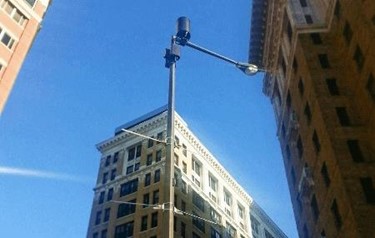FCC Wants To Streamline Rules To Spur 5G Small Cell Deployment
By Jof Enriquez, Follow me on Twitter @jofenriq

The Federal Communications Commission (FCC) plans to relax existing rules governing the deployment of small cells needed to run upcoming 5G networks across the United States.
Currently, companies must comply with several requirements under the National Environmental Policy Act (NEPA) and the National Historic Preservation Act (NHPA) prior to installing small cells. These rules, however, are incongruent with next-generation 5G technology, which requires small cells spaced about 500 feet apart to deliver 5G signals.
"The federal environmental/historic process was designed for the macro tower/macrocell era and the costs and fees associated with that worked to some extent when we deployed 3G, when [we] deployed 4G, but when you’re going to 5G you can’t have the same permitting cost structure that applied to one macro cell that served large square miles," said FCC Commissioner Brendan Carr, according to RCR Wireless.
Last week, Carr told delegates at the Consumer Technology Association's 5G Day that the plan to revamp existing rules "could cut regulatory costs of small cell deployment by 80 percent, halve deployment time, and expand deployments," reported Telecompetitor. The agency will vote on the proposal this month.
FCC Chairman Ajit Pai is strongly pushing to streamline regulation to fast-track the deployment of 5G in the U.S. to keep in step with other nations, and to bridge the digital divide between urban and rural areas in America.
The agency is siding with telecommunications companies lobbying for states and municipalities to loosen rules that stymie the fast deployment of 5G. FCC and industry have the momentum. Since 2016, 13 states have passed bills that limit local control, and more states are likely to follow suit, according to the New York Times.
Points of contention range from revenue generation to aesthetic reasons.
Local officials believe that small cell equipment installed in/on poles could become eyesores and lower property values, while companies say their designs for 5G equipment are unobtrusive.
Close scrutiny by local authorities, in California, in particular, on matters such as antenna design and radiofrequency exposure, have delayed some 5G projects by as much as 800 days, reported NYT.
But, the biggest argument surrounds hefty fees levied by cities and municipalities on wireless companies, who are asking FCC to cap local fees.
"Cities and municipalities need to be compensated for their costs, but the deployment itself in my mind is not what should be sort of a profit center or a moneymaking venture for cities because that strips capital out of more deployment," said Carr. "So we are looking at a whole set of issues that comes to state and locals – I haven’t made any final decisions yet about that … but we’re going to continue to be turning toward state and local and I expect that we’ll be taking action there."
